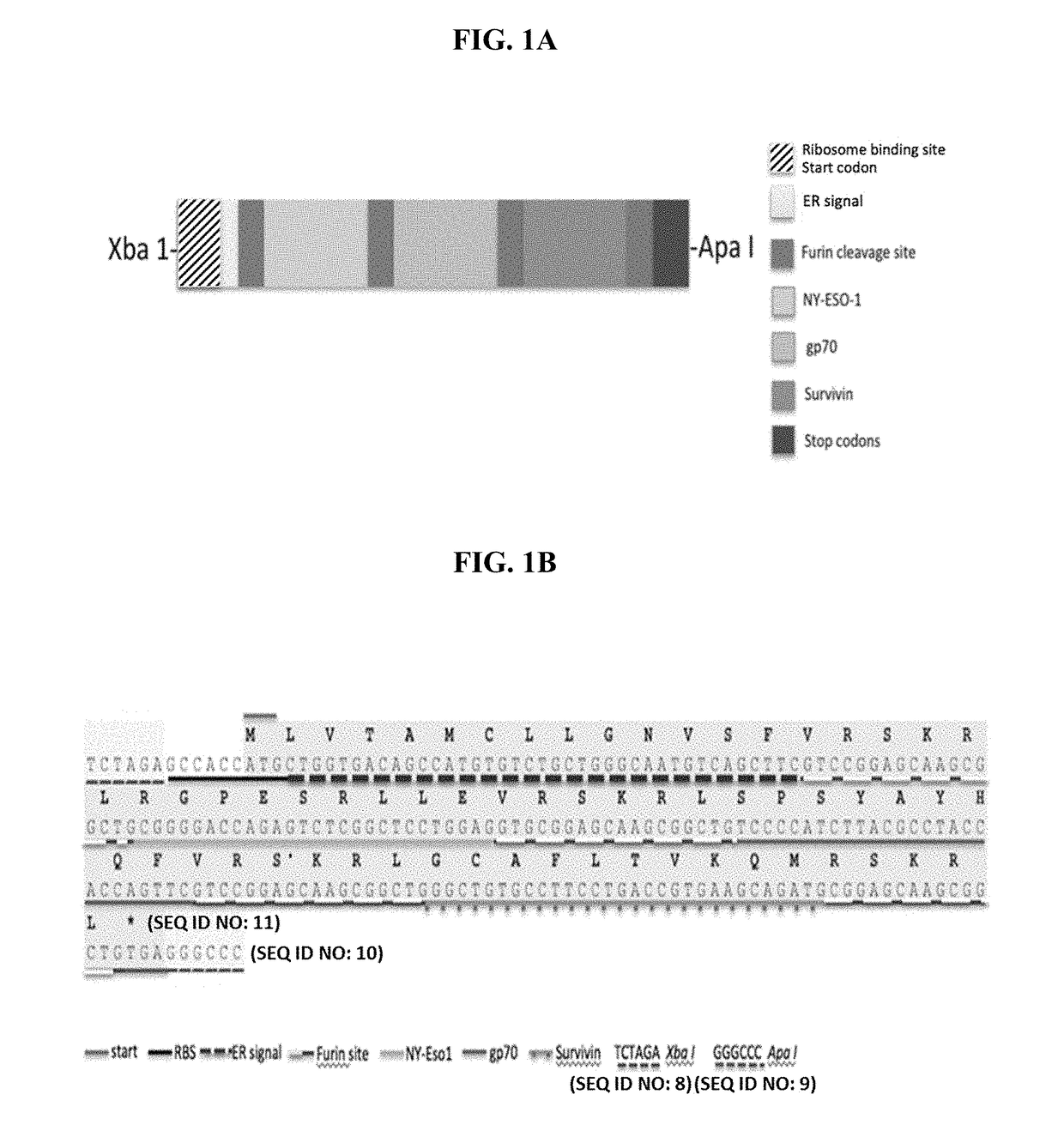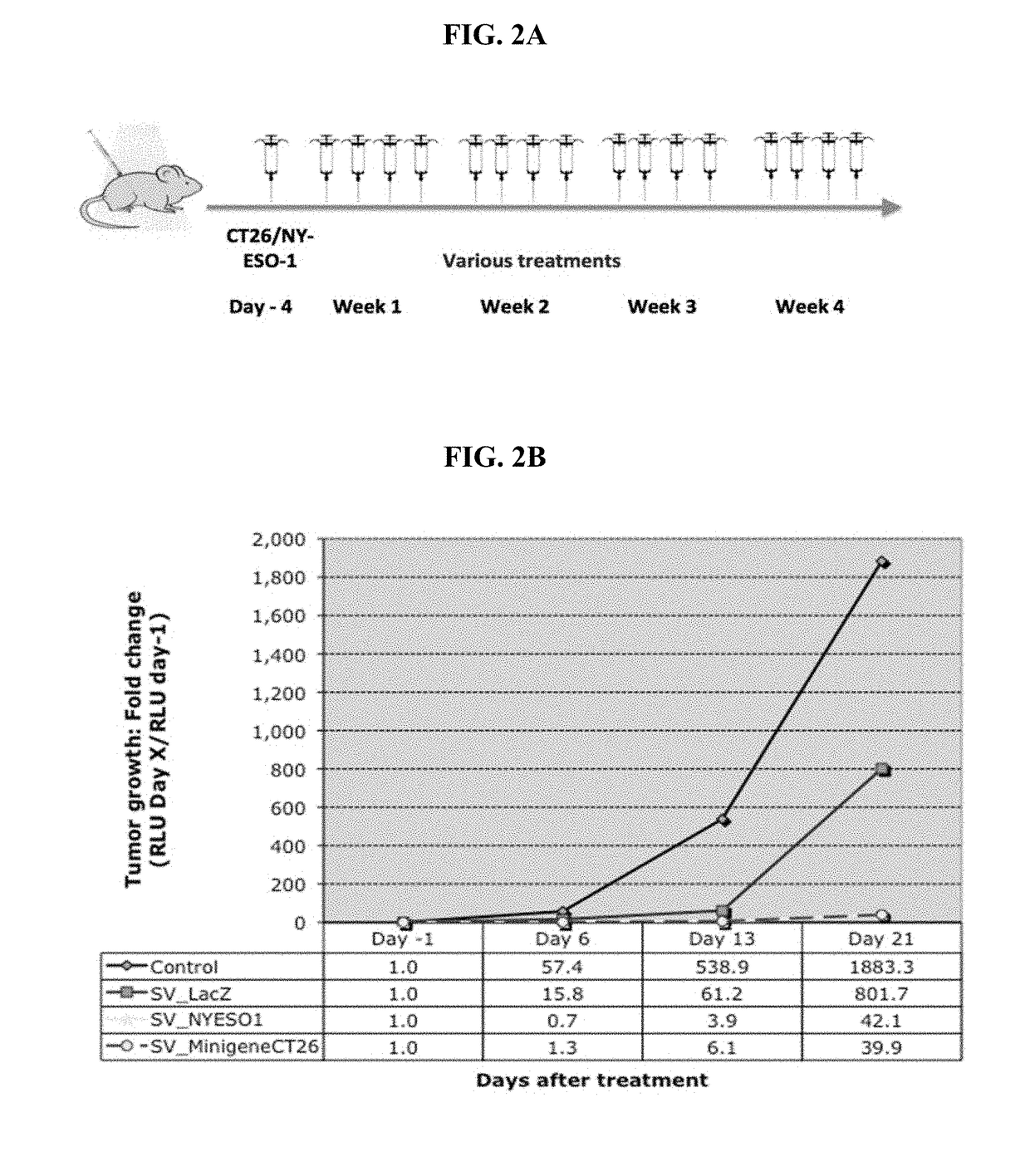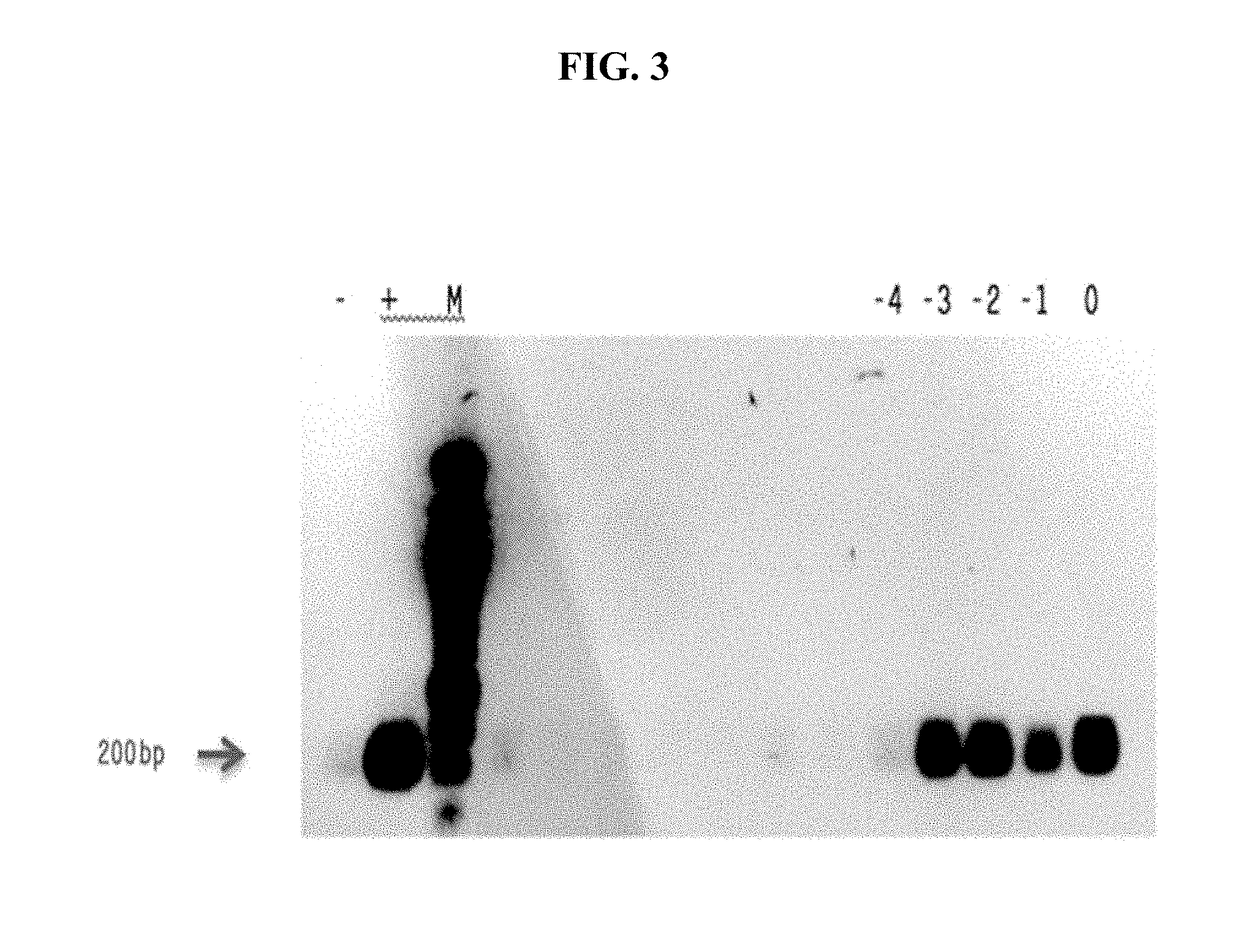Virus Vectors Expressing Multiple Epitopes of Tumor Associated Antigens For Inducing Antitumor Immunity
a virus and tumor technology, applied in the field of virus vectors expressing tumor associated antigens, can solve the problems that tumor cells may not be efficiently targeted, cancer treatment approaches using oncolytic viruses have not generally led to complete cancer or tumor remission, etc., to improve the stability or nuclear export of the mrna, and the rate of translation of these genes is increased.
- Summary
- Abstract
- Description
- Claims
- Application Information
AI Technical Summary
Benefits of technology
Problems solved by technology
Method used
Image
Examples
example 1
Methods
[0156]Vector preparation: Construction of recombinant viral vectors was performed using standard techniques well known to those of ordinary skill in the field of molecular biology, including, but not limited to, plasmid purification, restriction endonuclease digestion, ligation, transformation, polymerase chain reaction and DNA sequencing (e.g., Current Protocols in Molecular Biology, EM. Ausubel et al. (Eds), John Wiley and Sons, Inc., NY, USA. (1998) and Molecular Cloning: A Laboratory Manual (2nd Ed.), J. Sambrook, E. F. Fritsch and T. Maniatis (Eds), Cold Spring Harbor Laboratory Press, NY, USA. (1989)).
[0157]For the experiments using Sindbis viral vector encoding LacZ (SV / LacZ) as an immunogenic SV / TAA agent, and SV / Fluc and SV / GFP as control vectors, the vectors were produced as previously described. (Tseng J. C. et al,., 2004, Nat. Biotechnol., 22:70-77). Briefly, plasmids carrying the replicon (SinRep5-LacZ, SinRep5-GFP, or SinRep5-Fluc) or DHBB helper RNAs (SinRep5-t...
example 2
Construction of a Sindbis Viral Vector Expressing Multiple Epitopes for Inducing Anti-Tumor Immunity
[0163]A polynucleotide (DNA sequence; minigene) encoding multiple T cell recognition epitopes separated by furin enzyme cleavage sites was synthesized by GeneArt® (Life Technologies Corp., Waltham Mass.) using standard molecular biology methods. The synthetic polynucleotide contained a ribosome binding site, a translation start codon, an endoplasmic reticulum signal sequence, followed by furin cleavage sites interspersed with the epitope-encoding sequences, a stop codon and restriction enzyme sites that allowed the polynucleotide sequence to be inserted into XbaI / ApaI restriction endonuclease sites of the Sindbis replicon pT7StuI-RLacZ #202 (WO 2015 / 035213 A2) to replace the LacZ gene. The Sindbis replicon contained a viral sub-genomic promoter sequence upstream from the Xbal site and a mRNA poly A sequence located downstream of the Apal site. This synthesized DNA sequence and its enc...
example 3
Sindbis Viral Vector Encoding Multiple Epitopes of Tumor Associated Antigens Produces Polyepitope mRNA
[0177]An experiment was conducted to determine whether the Sindbis viral vector (SV / MG-CT26) encoding multiple epitopes of tumor associated antigens, namely, NY-ESO-1, gp70 and survivin as described in Example 2 supra, produced the correct multiple epitope mRNA. For the experiment, ten-fold serial dilutions of the Sindbis virus vector encoding multiple epitopes, called “SV / MG-CT.26” herein (100-1011) were used to infect 2×104 baby hamster kidney cells. After an overnight incubation, the cells were collected by centrifugation, and RNA was isolated using a Qiagen kit (Qiagen, Hilden, Germany) according to the manufacturer's instructions. RNA was quantified using a nanodrop spectrophotometer.
[0178]One microgram (1 μg) of each sample was reversed transcribed using ThermoScript (Life Technologies, CA) according to the manufacturer's instructions. The cDNA5_R reverse primer 5′ TTTTTGAAATG...
PUM
| Property | Measurement | Unit |
|---|---|---|
| temperatures | aaaaa | aaaaa |
| temperatures | aaaaa | aaaaa |
| temperatures | aaaaa | aaaaa |
Abstract
Description
Claims
Application Information
 Login to View More
Login to View More - R&D
- Intellectual Property
- Life Sciences
- Materials
- Tech Scout
- Unparalleled Data Quality
- Higher Quality Content
- 60% Fewer Hallucinations
Browse by: Latest US Patents, China's latest patents, Technical Efficacy Thesaurus, Application Domain, Technology Topic, Popular Technical Reports.
© 2025 PatSnap. All rights reserved.Legal|Privacy policy|Modern Slavery Act Transparency Statement|Sitemap|About US| Contact US: help@patsnap.com



